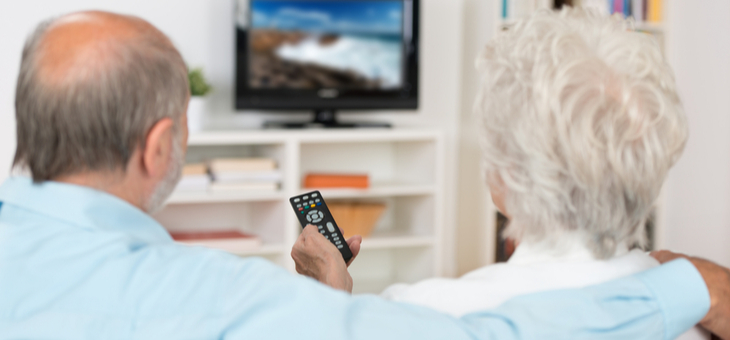Researchers have found that inactivity is associated with a higher risk of dying from cancer.
The University of Texas MD Anderson Cancer Centre conducted the first study to examine objective measures of sedentary behaviour and cancer mortality, using accelerometers to find an “82 per cent higher risk of cancer mortality compared to the least sedentary individuals”.
International medical journal JAMA concluded: “Replacing sedentary time with light-intensity physical activity (LIPA), or moderate to vigorous-intensity physical activity (MVPA), may be associated with a lower risk of cancer mortality.”
“This is the first study that definitively shows a strong association between not moving and cancer death,” said Dr Susan Gilchrist, associate professor of clinical cancer prevention and lead author of the study.
“These findings suggest that the total volume of sedentary behaviour is a potential cancer mortality risk factor and support the public health message that adults should sit less and move more to promote longevity.
“Our findings show that the amount of time a person spends sitting prior to a cancer diagnosis is predictive of time to cancer death,” Dr Gilchrist told sciencedaily.com.
“Conversations with my patients always begin with why they don’t have time to exercise. “I tell them to consider standing up for five minutes every hour at work or taking the stairs instead of the elevator. It might not sound like a lot, but this study tells us even light activity has cancer survival benefits.”
To measure sedentary behaviour, 8002 participants who did not have a cancer diagnosis when enrolled wore an accelerometer on their hip during waking hours for seven consecutive days.
Dr Gilchrist said individuals who replaced 10 to 30 minutes of sedentary time with LIPA or MVPA had a lower risk of cancer mortality.
“Our findings reinforce that it’s important to ‘sit less and move more’ and that incorporating 30 minutes of movement into your daily life can help reduce your risk of death from cancer. Our next step is to investigate how objectively measured sedentary behaviour impacts site-specific cancer incidence and if gender and race play a role.”
A previous study found that prolonged sedentary TV viewing time, a surrogate for a more inactive lifestyle, was associated with increased risk of young-onset colorectal cancer, particularly of the rectum.
That study also underscored “the importance of maintaining an active lifestyle”.
In 2017, sedentary behaviour was considered to increase the risk for all cancer by 13 per cent.
The Australian government’s Cancer Australia site reports that “5 per cent of cancers in the United States are linked to lack of regular exercise or sedentary lifestyle”.
Australians should take note.
“The 2011-12 Australian Health Survey found 60 per cent of Australian adults undertook less than 30 minutes of exercise per day. Around 30 per cent of the adult population reported more than five hours of sedentary leisure activity each day.
Cancer Australia recommends at least 30 minutes of moderate-intensity physical activity per day and limiting sedentary habits, such as watching television, to reduce cancer risk.
The Heart Foundation has more experience with helping sedentary Australians get moving.
Here are their guidelines:
- Start small. Begin by blocking out some time in your day, even if it is just for a short stroll. You can then build up gradually. Remember that every step counts.
- Set realistic goals and be kind to yourself. If you are new to exercise, don’t be hard on yourself. Try to create a plan, starting with 10 minutes a day. Slowly building up may help you feel motivated to continue.
- Get more active in your neighbourhood. Go for a walk around your suburb and you’ll probably see lots of places and opportunities to be more active. You could also take public transport instead of driving your car.
- Mix up your activities. To keep activities enjoyable, add some variety or try something new such as tai chi or a dance class. You can also build activity into your social outings, such as going for a walk with a friend.
- Be prepared. Make sure you dress for the weather and be sun smart. You can wear an activity tracker such as a Fitbit to monitor progress and help you stay motivated.
- Make sure you’re safe. Know your limits and make sure you don’t overdo high-intensity activity. Stick to well-lit public areas in the early morning or take a friend at night. Be aware of your surroundings by keeping your headphone volume to a minimum.
- Get active with friends and family. Having a buddy is another great way to stay motivated with physical activity.
- Join a community group. Join walking groups or contact your local council to find out about free or low-cost activities.
Does your job, or entrenched habits, make it hard to stay active?
If you enjoy our content, don’t keep it to yourself. Share our free eNews with your friends and encourage them to sign up.
Disclaimer: This article contains general information about health issues and is not advice. For health advice, consult your medical practitioner.
Related articles:
https://www.yourlifechoices.com.au/health/wellbeing/yoga-keeps-seniors-young
https://www.yourlifechoices.com.au/health/wellbeing/fallen-in-love-with-walking
https://www.yourlifechoices.com.au/health/wellbeing/more-turn-to-this-stress-relief-technique

